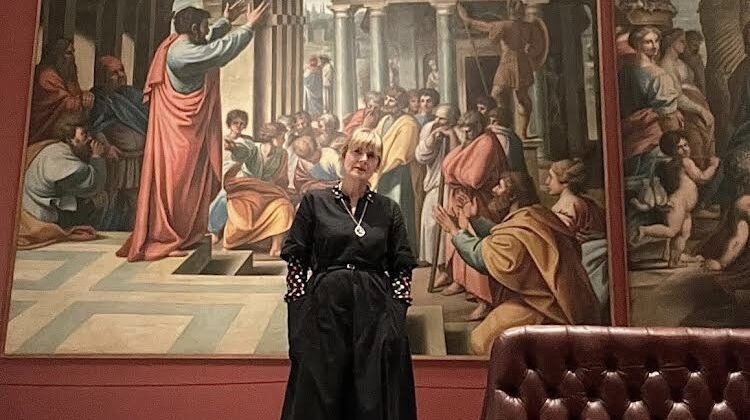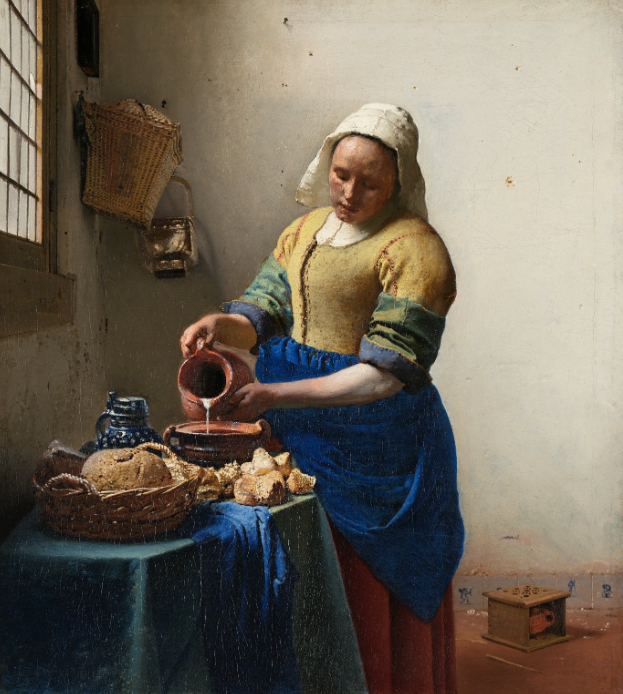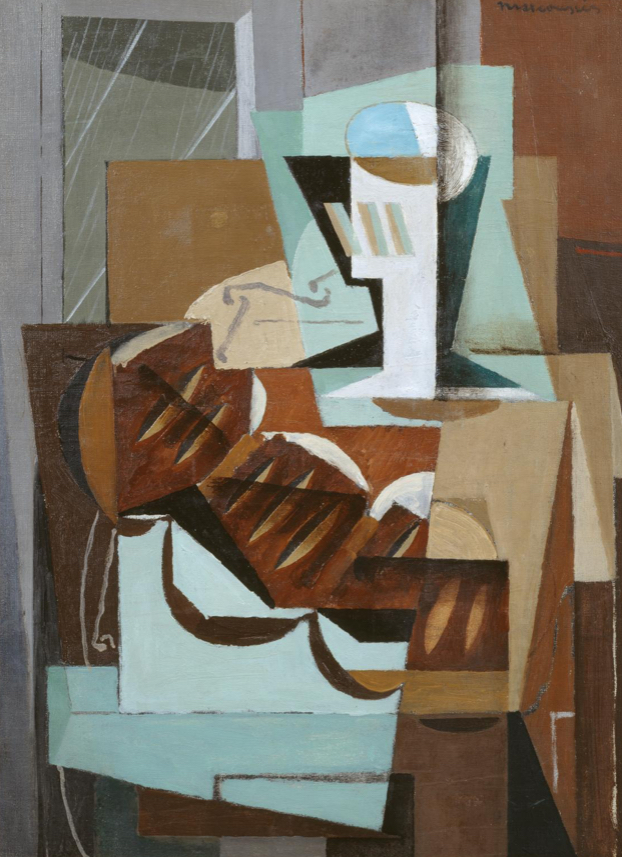
In this month’s art column, Suffolk-based artist, educator and presenter Grace Adam appreciates two paintings of one of the most important foods we eat: Bread
A few mornings ago, I was sitting alone in the Permanent Collection at the Royal Academy of Arts. I looked up at the 16th Century copy of Leonardo’s Last Supper and noticed the bread, beautiful round crusty balls of bread. Perhaps I was hungry! It struck me that bread has been lovingly rendered by artists for thousands of years. Dutch painters of still lives devoted many painstaking hours to buns, loaves and baps. Paintings of bread can symbolise abundance, labour, sustenance, ordinary lives and peoples’ relationships to their gods.
Johannes Vermeer The Milkmaid 1658

At just 25 years old Johannes Vermeer created The Milkmaid – a familiar painting, although perhaps less famous than her more glamorous associate with the pearl earring. This small work shows a young kitchen maid completely absorbed in her duties. Rolled up sleeves reveal her work worn hands and reddened forearms. The chilly room has a footwarmer on the floor to her right, complete with a pot of hot coals inside. Everything in this small sparse room is still, except for the steady trickle of milk from an earthenware jug. She’s probably making bread porridge using the left-over stale bread on the table.
Vermeer’s patron Pieter van Ruijven would certainly have been aware of the historical clichés and assumptions surrounding milkmaids. One of the Delft tiles that makes up the skirting board depicts Cupid. If we think of Vermeer as a modern painter though, this is about hard work, servitude and domestic virtue. We look up at nher, not down on her. Light floods in from the window catching her nose and forehead. Vermeer uses tiny dots of paint to tell us where the sunlight falls on the rough bits of bread. The blues of the vessel, the apron and her sleeves are all picked up on the terracotta bowl.
From x-rays we know that Vermeer changed his mind. He shifted the woman into a different kind of domestic labour by painting over a large clothes basket. On the wall behind her, a single nail has been banged in. What hung there? He goes to extreme lengths to convince us that this a real person, sculpting her with light and surrounding her with tactile objects. Joshua Reynolds, the first President of the Royal Academy praised the painting for its striking quality. The Milkmaid is a mesmerising painting. We’re there looking up at her, so close to this woman across 350 years.
Louis Marcoussis Rain 1929

Three centuries later and painters are still fascinated with bread. Marcoussis, a French-Polish artist studied law then art in Poland before relocating to Paris and changing his name. Guillaume Apollinaire, avant-garde artist and poet of Polish descent suggested Marcoussis, after a village near Paris.
The painter spent the summer of 1929 near St Malo and started to paint Breton loaves. Even though this is a Cubist work, we can see through the window in the top left, the rain of the title. That loaf of bread with its handy angular cuts across its crust dominates the painting. Even radical artists still need daily bread.
On a related bread note…Recently lots has been written about a deadly fungal infection called ergotism. Ergot could develop in grain-particularly rye after severe winters and damp springs. Known as St. Anthony’s Fire, it was named for the 3rd Century desert Father who had hallucinatory bouts with the devil. Was ergot the reason for the wild paintings of Bosch and Grünewald? Some art historians think so, but that’s another story.
Visit Grace Adam Artist and Marina Abramovic at the Royal Academy of Arts: Part One (youtube.com) on The Art Channel. Follow @artistgraceadam on Instagram, X and Facebook.









A wonderful read, thank you so much for this thoughtful piece, Grace. Loved reading about this beloved food and in fact a subject that I myself have loved painting.